
Hollow Cathode Discharge Ion-Plating (HCD-IP)
The HCD-IP system was developed by Dugdale in 1966 . This system has eight independent variables that can be utilized to control the structure and properties of coatings, including gun power, substrate temperature, substrate bias, flow rate of reactant gas, flow rate of working gas, evaporant, distance between source and substrate and coating angle. The hollow cathode electron-gun (e-gun) is a tantalum (Ta) pipe. Below the e-gun, there is a water-cooled copper crucible for containing evaporant. The radio frequency (RF) and direct current (DC) power supplies are connected between the e-gun and copper crucible, and the substrate holder is located above the crucible. The deposition chamber is pumped down to 6.7x10^-4 Pa (5x10^-6 Torr). Then, working gas, argon (Ar), is introduced and is ionized by the RF power. The Ar ions impinge and heat up the Ta pipe, and the pipe will emit thermal electrons as the temperature exceeds 2000°C. A positive DC bias is applied between the e-gun and the crucible, which drives the electron toward the crucible. The evaporation source is then evaporated and ionized, and the ionization rate can reach up to 70%. After plasma is sustained between the e-gun and the crucible, the reactive gas is admitted into the chamber, and reacted with the evaporant (mostly metal and metal ions) on the substrate surface to form the coating.
The HCD-IP system has the following characteristics and advantages: (1) the system working at a low voltage (few tenths of volts) and a high current (up to 250 A), (2) high flexibility for producing oxides, nitrides and carbides, (3) high evaporation efficiency, up to 1 μm/min, (4) high ionization efficiency, 40-70%, and (5) the deposited thin films with high packing density and good adhesion.
Unbalanced Magnetron Sputtering
Magnetron sputtering has been progressed rapidly and widely applied in industry over the last decade. Significant impacts on many areas are being made, including hard, wear-resistant coatings, low friction coatings, corrosion-resistant coatings, decorative coatings and coatings with specific optical, or electrical properties . In general, sputtering is defined as the transfer of momentum from an incident energetic projectile to a solid or liquid target resulting in the ejection of surface atoms or molecules .
A “conventional” or ”balanced” magnetron was introduced in the early 1970s .The process limited by low ionization efficiencies in the plasma, low deposition rate and high substrate heating effects. Since the plasma is strongly confined to the target region, substrates will lie in an area with low plasma density. Consequently, the ion current drawn at the substrate (< 1mA/cm2) is generally insufficient for improving the structure of the films. To overcome these issues, unbalanced magnetron sputtering has been invented in the late 1980s .
In unbalanced magnetron sputtering, using unsymmetrical magnetic fields to direct some field lines towards the substrate, the plasma is no longer strongly confined to the target region; instead, the plasma is allowed to reach and encompass the substrate . Consequently, higher substrate ion current is available to modify the film structure. Wndows and Savvides have shown that substrate ion current densities of 5mA/cm2 and greater can be routinely generated in UBMS.
Recently, Teer and Arnell introduced a closed-field and mirrored-field unbalanced magnetron (UBM) sputtering systems. In the mirrored-field case, the field lines are directed towards the chamber walls, and hence secondary electrons following these lines are lost, resulting in a low plasma density in the substrate region. By contrast, in the closed-field configuration, the field lines are continued between the opposite magnetrons. The electron losses to the chamber wall are lower and the substrate is located in a high-density plasma region . Therefore, high quality thin film can be deposited.
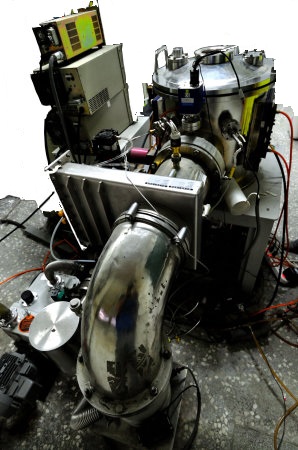
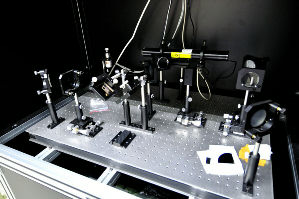
Laser Curvature Method
Residual stress of the samples was determined using laser curvature method.
Twenty measurements were executed for each sample to obtain the surface curvature which was used to calculate the residual stress by Stoney’s equation. The surface curvature of the MG/304SS samples cannot be correctly measured due to large surface roughness and substrate distortion and thereby the residual stresses are not attainable.
Unbalanced Magnetron Sputtering(NEW)
Magnetron sputtering can be divided into two types, balanced and unbalanced types.
The comparison between balanced and unbalanced magnetron configurations . Middle one is the traditional balanced magnetron sputtering configuration. Top and bottom show two unbalanced magnetron sputtering configurations. By placing magnets with different strength behind the target, the inner and outer magnets can extend the magnetic field from target surface to substrate and confine the secondary electron in the target-substrate region to enhance the ionization rate. With unbalanced magnetron configuration, the current densities at the substrate can increase roughly an order of magnitude higher than the balanced magnetron configuration.
The typical sputter-gun geometry using in UBMS. The toroidal plasma discharge is created and confined over the target surface. UBMS also uses different magnetic field configurations such as closed-field or mirrored-field to solve the problems of traditional balanced magnetron sputtering such as low ionization rate and low deposition rate. Under optimal coating parameters, magnetron sputtering can produce coatings with high hardness and adhesion, good colorations, high corrosion resistance, good optical and electrical properties . In recent studies, TiSiN coatings prepared using PVD methods usually obtained a lower hardness than those prepared by CVD process, but the coating hardness is still much higher (30-40 GPa) than the typical hardness of TiN (20-25 GPa) .
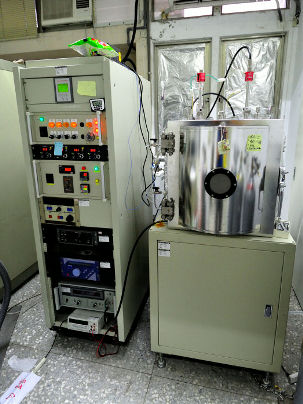
DC potentiodynamic polarization
DC electrochemistry, and in particular, the potentiodynamic polarization scan, allows considerable information on electrode processes to be acquired. Through the DC polarization technique, information on the corrosion rate, pitting susceptibility, passivity, as well as the cathodic behavior of an electrochemical system may be obtained. This application note provides a brief overview of the theory behind this technique, as well as how to extract useful information from a polarization scan.
A description of the system components (hardware and software) required to perform these measurements, as well as a description of each component and its function is provided. In addition, this note details how to perform a DC polarization experiment utilizing CorrWare in combination with electrochemical equipment from Solartron, Inc., such as the Model 1287 electrochemical interface.
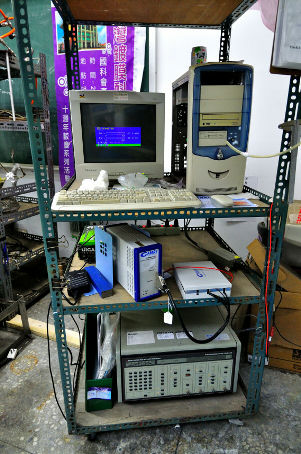
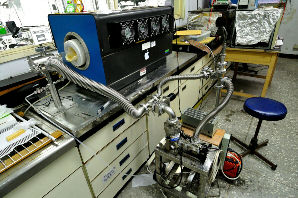
Heat Treatment
Heat treatment is one of the common processes to enhance the properties of hard coatings. Thermal energy can facilitate the diffusion of defects or atoms in the lattice, which can reduce the residual stress derived from coating process . Cunha et al. ?found that the crystallinity of ZrO2 would increase after annealing at temperature ranging from 400 to 900°C. They suggested that stress relaxation from heat treatment would increase the crystallinity and rearrange the Zr, O and N atoms to form monoclinic or tetragonal phases of ZrO2.
Growing ZrO2 on ZrN by heat treatment would accompany with color changing and blister formation . Since oxidation of ZrN may induce bulges and cracks on the film surface, we have proposed two ways to decrease the oxidation level . One method was to anneal in a controlled atmosphere with mixing gas containing Ar and a small amount of hydrogen, so that the residual oxygen would be consumed by reacting with hydrogen. The other was to utilize the oxygen getters, such as Ti or Zr pellets, and seal a dummy Si wafer on the specimens to reduce the exposure area of oxygen. However, these two methods could only lower the oxidation extent but not fully prevent oxidation.